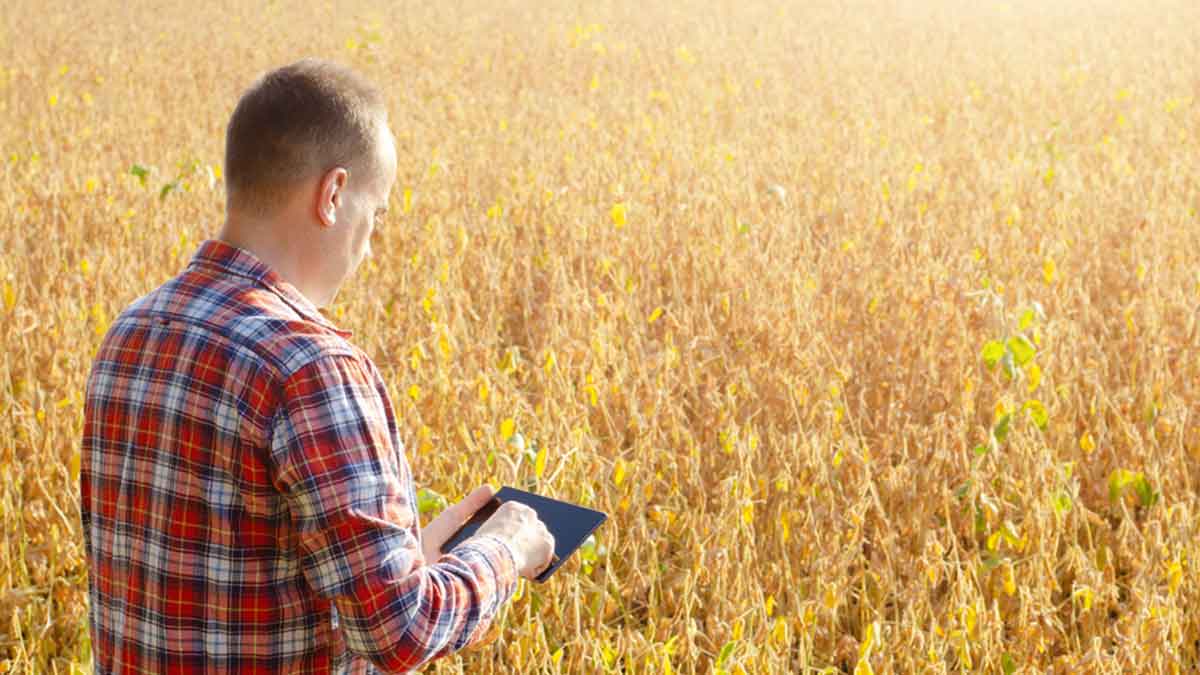Nowadays, IoT in farming is a strategic approach that combines the most recent technology with the oldest industry in the world. This is the ideal amalgamation of two different worlds and IoT devices are the foundation of this revolution.
What is one of the biggest questions in agriculture? It is most likely that you have heard of it already.
What will you feed?
In 2050, there will be 10 billion months with the same amount (or virtually less) of land?
Smart farming is the solution. Smart farming uses data and automation to aid in managing farm activities and bring up farm yield while saving resources and time.
What is IoT in Farming?
So, what makes a device smart? Ability to thoroughly understand, collect and apply data to accomplish a set of goals. Smart farming refers to an assortment of types of farming equipment that can easily interpret data from various sources (historical and instrumental).
A water sprinkler system, as an example, analyzes past rain and weather forecasts, so, it is possible to determine the amount and time it should water the crops. This is just one example of the basic IoT-powered smart agriculture device that can be used.
In other words, smart agriculture systems that use IoT technology can easily perform all expectations.
Both conventional and smart farming has the same fundamentals, but the way farmers apply them is a bit distinct. The obstacles facing the agriculture industry are therefore twofold.
- Traditional farming methods must be supported and informed to enable connectivity in agriculture.
- Farms that have data and connectivity already must present the benefits of agricultural technology.
However, this is not a long-term change in generational patterns. Smart farming adoption will reach a new record (about 70% in the next few years).
Understanding the Smart Farming Technologies
The IoT in Agriculture, Smart Farm Technologies, and Connected Farming all simply refer to the same thing. Technology that works together with all devices and evolves from data.
It sounds a little broad, but let’s clarify.
Sensing
Typically, sensing is where all types of sensor-based technology come into play. As a result, a sensor node typically has a processing module, a microcontroller unit (microcontroller), and multiple sensors.
These devices sense the environment and gather data about farming, such as temperature and humidity. What happens to the data collected you may ask?
Connectivity
Subsequently, you need to transfer the data between devices. It is possible to transfer data in two different ways: to the nearest gateway or a neighboring node. This transmission goes to cloud servers for analysis and storage.
Intelligence IoT in Farming
The final step is to take action based on the system’s data analysis. The user can either program or manually execute this action, depending on their preference. If the process can be automated, the smart farming devices will execute a specific action based upon the present readings.
Above all, smart farming has made it possible to automate the farm’s daily operations thanks to all of the advances in smart agriculture. The farmer can make any decision and the system will automatically update via the dashboard or a user app.
Now you know what smart farming is, and how it works. But it is time to explore the most promising smart farm technology options.
These are the IoT products that will transform this industry in agriculture.
Agribots
Agribots, also known as Agricultural Bots, are robots that are made for agricultural activities. These robots are capable of performing manual tasks such as plowing, sowing seed, watering, and spraying fertilizers.
Farmers use these robots to help lower labor costs for farmers and increase speed and accuracy when performing tedious tasks. This technology is the ideal solution to the growing labor shortage and increasing demand.
Smart Irrigation
Multiple sensors are installed in the farm at specific distances to measure the soil, light, temperature, humidity, and other factors that can affect farm products. The system will then inform you when and how much water to apply to the crops based on the data.
This ultimately helps save water and allows you to make better choices about your yield. You can easily water your complete farm anywhere you are with your smartphone app for irrigation.
Livestock Monitoring Collars
A variety of farms are involved in livestock farming. Cattle and livestock farming are just as difficult as land farming. A smart IoT product is the livestock monitoring collar. It will help cattle farmers.
These livestock monitoring collars have an assortment of sensors fitted in them that periodically check the cattle’s vital signs, for instance, body temperature, surroundings, etc. The dairy farmer can access the information via a digital dashboard or mobile app.





